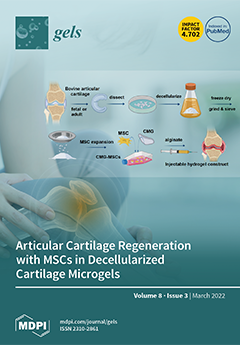Immediate dentin sealing (IDS) involves applying an adhesive system to dentin directly after tooth preparation, before impression. This was considered an alternate to delayed dentin sealing (DDS), a technique in which hybridization is performed following the provisional phase and just before the indirect
[...] Read more.
Immediate dentin sealing (IDS) involves applying an adhesive system to dentin directly after tooth preparation, before impression. This was considered an alternate to delayed dentin sealing (DDS), a technique in which hybridization is performed following the provisional phase and just before the indirect restoration luting procedure. This study aimed to compare the bond strength of restorations to dentin of the IDS and the DDS techniques throughout a systematic review and meta-analysis. The following PICOS framework was used: population, indirect restorations; intervention, IDS; control, DDS; outcomes, bond strength; and study design, in vitro studies. PubMed (MedLine), The Cochrane Library, ISI Web of Science, Scielo, Scopus, and Embase were screened up to January 2022 by two reviewers (L.H. and R.B.). In vitro papers studying the bond strength to human dentin of the IDS technique compared to the DDS technique were considered. Meta-analyses were carried out by using a software program (Review Manager v5.4.1; The Cochrane Collaboration). Comparisons were made by considering the adhesive used for bonding (two-step etch-and-rinse, three step etch-and-rinse, one-step self-etch, two-step self-etch, and universal adhesives). A total of 3717 papers were retrieved in all databases. After full-text assessment, 22 potentially eligible studies were examined for qualitative analysis, leaving a total of 21 articles for the meta-analysis. For the immediate bond strength, regardless of the adhesive strategy used, the IDS technique improved the bond strength of restorations to the dentin (
p < 0.001). Taking into account the subgroup analysis, it seems that the use of the IDS technique with a two-step etch-and-rinse or a one-step self-etch adhesive system does not represent any advantage over the DDS technique (
p = 0.07,
p = 0.15). On the other hand, for the aged bond strength, regardless of the adhesive strategy used, the IDS technique improved the bond strength of restorations to the dentin (
p = 0.001). The subgroups analysis shows that this improvement is observed only when a three-step etch-and-rinse adhesive system (
p < 0.001) or when a combination of an adhesive system plus a layer of flowable resin (
p = 0.01) is used. The in vitro evidence suggests that the use of the IDS technique improves the bond strength of dentin to resin-based restorations regardless of the adhesive strategy used. The use of a three-step etch-and-rinse adhesive system or the combination of an adhesive system plus a layer of flowable resin seems to considerably enhance the bond strength in the long term.
Full article






